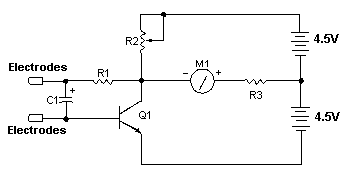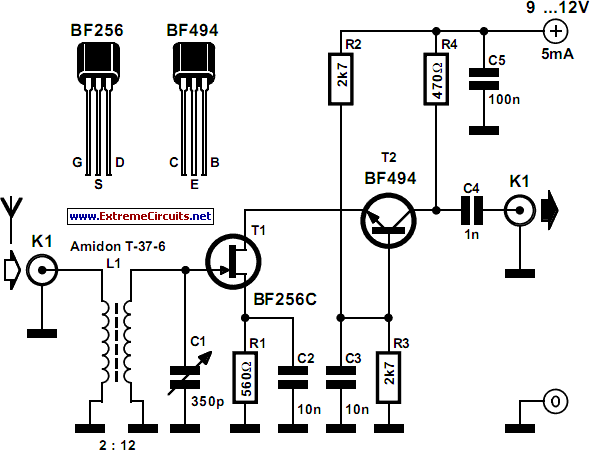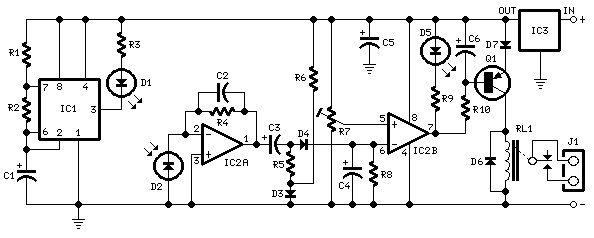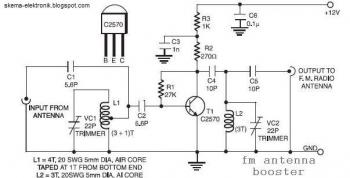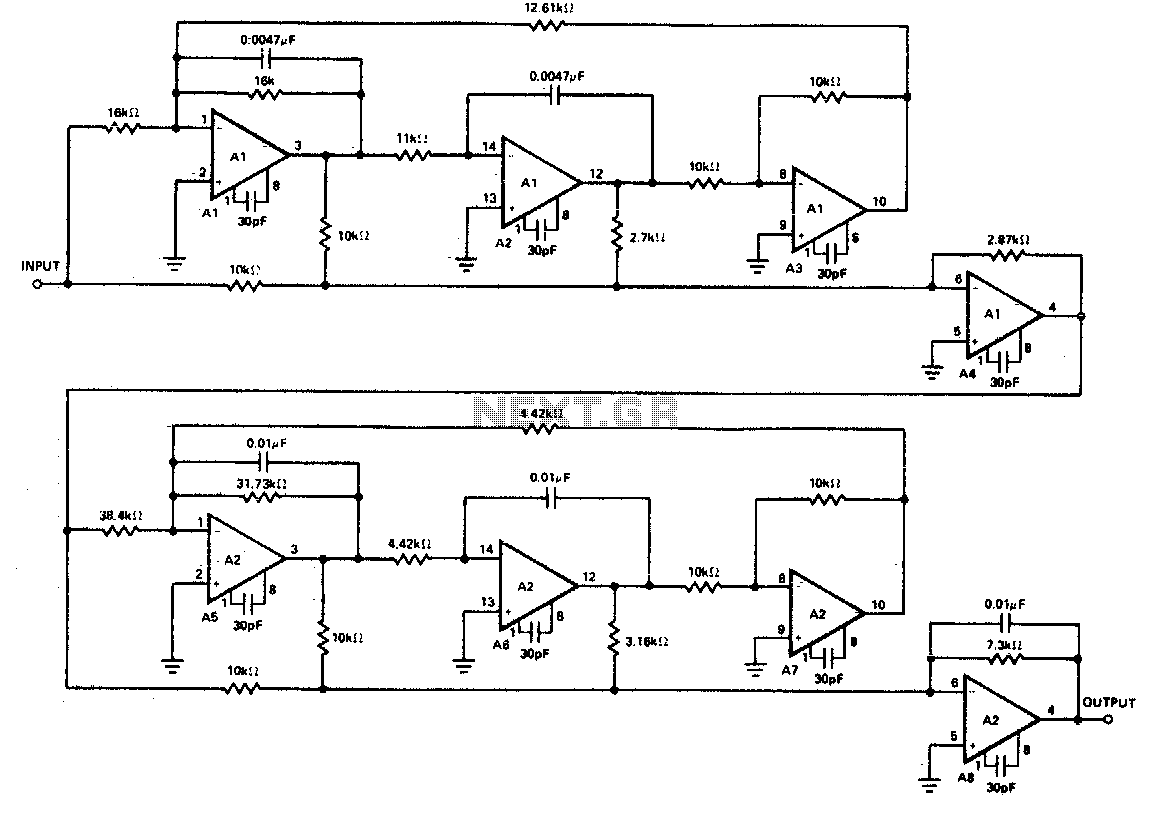
Active Rf Detector Probe
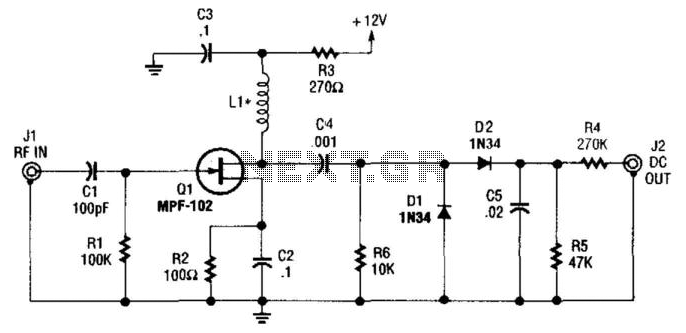
An MFP102 FET is utilized as a wideband amplifier. It can operate with an inductance (LI) of 100 µH for frequencies between 30 to 100 MHz or 1000 µH for frequencies between 2 to 30 MHz. For low frequencies (less than 3 MHz), a 2.5 µH RF choke should be employed. This probe functions as a relative indicator device but can be calibrated across a frequency range if necessary.
The MFP102 FET is a field-effect transistor known for its high frequency and low noise characteristics, making it suitable for use in wideband amplifier applications. The choice of inductance values is critical for optimizing the amplifier's performance across different frequency ranges. For instance, using a 100 µH inductor allows the amplifier to effectively process signals in the 30 to 100 MHz range, while a 1000 µH inductor extends its operational capabilities down to 2 MHz.
At frequencies lower than 3 MHz, the circuit requires a 2.5 µH RF choke to prevent unwanted oscillations and ensure stable operation. This choke acts as a passive component that blocks high-frequency signals while allowing low-frequency signals to pass through, thereby facilitating the desired frequency response of the amplifier.
The probe's design allows it to serve as a relative indicator device, which means it can provide comparative measurements rather than absolute values. This feature is particularly useful in applications where quick assessments of signal strength or frequency response are needed. The calibration capability across a frequency range enhances the versatility of the probe, allowing users to adjust its sensitivity and accuracy based on specific requirements or applications.
Overall, the MFP102 FET-based wideband amplifier circuit is a robust solution for a variety of RF applications, offering flexibility in frequency handling and ease of calibration for precise measurements. Proper implementation of the specified inductance values and RF choke is essential for achieving optimal performance and reliability in signal amplification tasks. An MFP102 FET is used as a wideband amplifier. LI can be 100 for 30 to 100 MHz or 1000 for 2 to 30 MHz. For LF, (less than 3 MHz), use a 2,5- RF choke. This probe will work as a relative indicator device, but it can be calibrated over a frequency range, if needed. 🔗 External reference
The MFP102 FET is a field-effect transistor known for its high frequency and low noise characteristics, making it suitable for use in wideband amplifier applications. The choice of inductance values is critical for optimizing the amplifier's performance across different frequency ranges. For instance, using a 100 µH inductor allows the amplifier to effectively process signals in the 30 to 100 MHz range, while a 1000 µH inductor extends its operational capabilities down to 2 MHz.
At frequencies lower than 3 MHz, the circuit requires a 2.5 µH RF choke to prevent unwanted oscillations and ensure stable operation. This choke acts as a passive component that blocks high-frequency signals while allowing low-frequency signals to pass through, thereby facilitating the desired frequency response of the amplifier.
The probe's design allows it to serve as a relative indicator device, which means it can provide comparative measurements rather than absolute values. This feature is particularly useful in applications where quick assessments of signal strength or frequency response are needed. The calibration capability across a frequency range enhances the versatility of the probe, allowing users to adjust its sensitivity and accuracy based on specific requirements or applications.
Overall, the MFP102 FET-based wideband amplifier circuit is a robust solution for a variety of RF applications, offering flexibility in frequency handling and ease of calibration for precise measurements. Proper implementation of the specified inductance values and RF choke is essential for achieving optimal performance and reliability in signal amplification tasks. An MFP102 FET is used as a wideband amplifier. LI can be 100 for 30 to 100 MHz or 1000 for 2 to 30 MHz. For LF, (less than 3 MHz), use a 2,5- RF choke. This probe will work as a relative indicator device, but it can be calibrated over a frequency range, if needed. 🔗 External reference
Warning: include(partials/cookie-banner.php): Failed to open stream: Permission denied in /var/www/html/nextgr/view-circuit.php on line 713
Warning: include(): Failed opening 'partials/cookie-banner.php' for inclusion (include_path='.:/usr/share/php') in /var/www/html/nextgr/view-circuit.php on line 713

